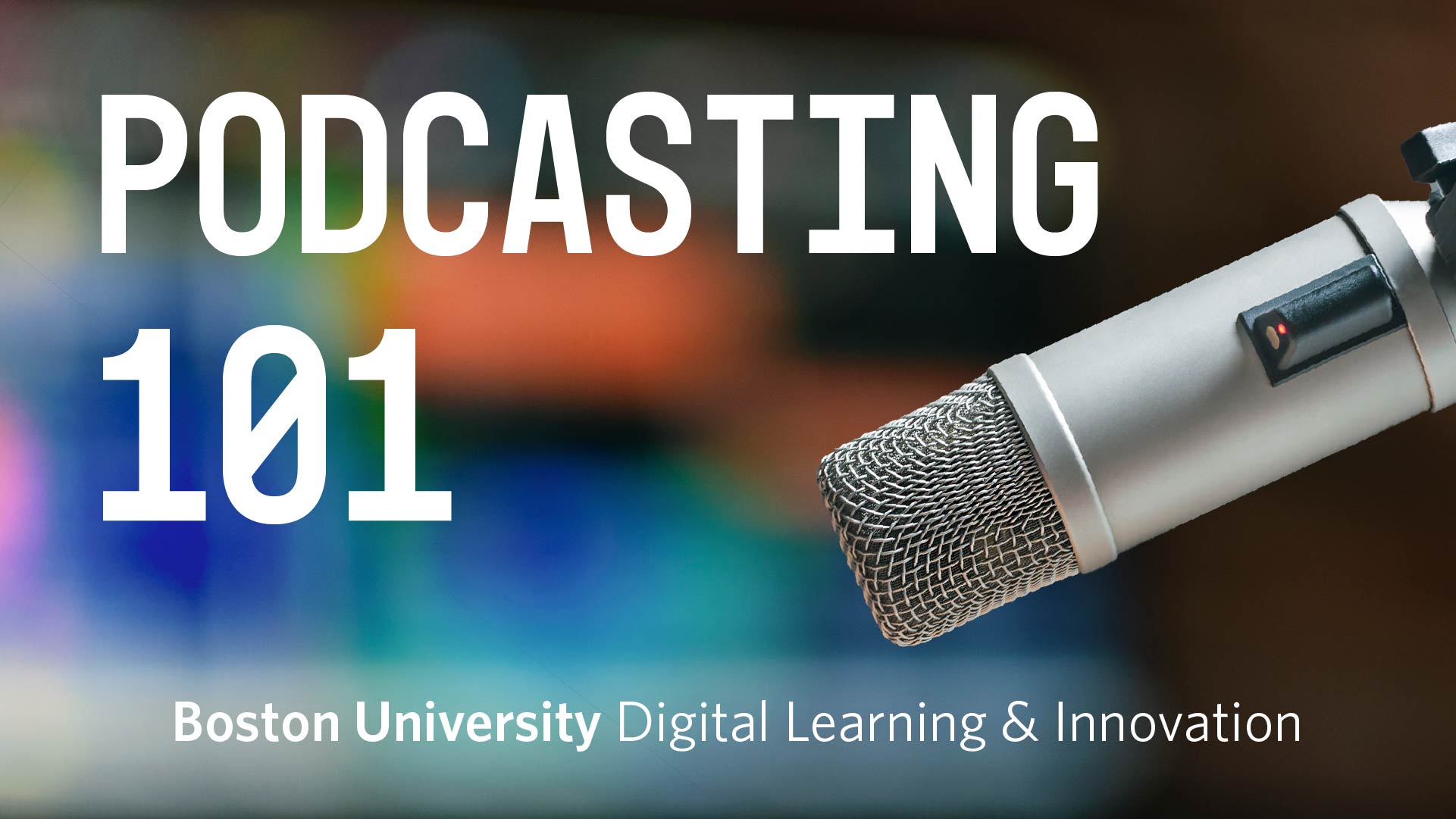Podcasting 101
Podcast listenership is booming. According to 2022 research data, more and more Americans—62 percent of the population—are tapping into the listening trend. With over 2 million podcasts worldwide, podcasting is a medium—and an education tool—to consider.
“In higher education specifically, lecturers can easily broadcast engaging audio content which students can then listen to at any time, wherever they are,” says Bob Heim, senior educational producer and 25-year video production veteran. “I’ve noticed that students tend to listen longer than they’ll watch or read. While a video longer than three minutes can struggle to attract viewers, podcasts can routinely run over an hour.”
Heim says there are several benefits to audio podcasts: first is ease of access. “Podcasts can be automatically downloaded to your phone or desktop computer for you to listen to at your convenience. At the gym, driving, relaxing at home….anytime.”
When building a podcast, content key. Heim suggests choosing a topic that is of interest to you and a greater audience (size doesn’t matter). “As with most things, talk about subject matter that you are passionate about. If you are passionate about what you are talking about, that really comes through.”
Once you find your content niche, next is production and implementation. Here are some tricks of the trade for faculty interested in jumping into the podcasting arena.

Start with the basics: Sound
In a nutshell: “If your podcast sounds bad…people will tune out,” Heim says.
There are several production tools in the tech marketplace. According to the Podcast Gear Survey, 48 percent of podcasters use Audacity, a free and open-source digital audio editor and recording application software to edit their podcast, with Adobe Audition, a digital audio workstation from Adobe Systems, trailing in second place with a 31 percent overall usage rate.
“Audacity offers some free audio tools to learn basic audio editing. If you have access to Adobe Audition, there are great tutorials to quickly get you up and running.”
When it comes to choosing a microphone, you don’t need to spend a lot. “There are all kinds of different mics depending on if you want to just plug your microphone into your computer via USB or you can record right to your phone,” he adds. “The key to recording with any microphone is consistency.”
Choose a quiet location free of distractions and keep the mic about three feet from your mouth.
Work from a script (or not?)
“While I generally recommend having a script before you record (audio or video), I believe that whether or not you use one depends on the format of your podcast. If you are delivering a concise message with multiple points that you want to get across, then you should certainly consider using a script,” Heim adds.
If the host opts for a script, it is best to craft your copy, read it aloud before you record to establish a flow and a rhythm and to identify words that you may stumble over. “Remember, how we write is not how we speak.”
If the format of your podcast is in interview or group conversation form, then try using a bulleted topic list and let the conversation develop naturally.
Relax and keep it conversational
When you are ready to record, take a deep breath and relax. “All the listener has to go on is your voice. Keep your pace consistent and intelligible, yet conversational. The listener will relate more,” he says.
Don’t focus on perfection
Don’t overthink. The vast majority of your audience is familiar with the whole concept of podcasts and they aren’t expecting anything highly polished. “In fact, if the listener hears papers rustle, you clearing your throat or vocalized pauses like um or ah’s, your podcast may seem more genuine or authentic,” Heim says.
The same is true when you are editing your podcast. “It doesn’t have to be perfect. You can take out mis takes or sneezes, etc…but overall…It just needs to flow.”
Best practices
Keep water on hand because your mouth will dry out from all that talking. “I definitely don’t recommend soda because of the carbonation. You don’t want to burp in the middle of your podcast,” Heim says.
Try to avoid tangents and keep on topic. “It’s ok to stray from your script but you need to avoid making it sound like you are rambling.”
Don’t rush and take your time. It’s important for your listener to be able understand you.
“At the end of the day, I encourage anyone interested in trying a podcast,” Heim adds. “It’s easy, it’s engaging and it’s effective.”
Additional BU Resources
 About the Contributor: Bob Heim is a Senior Multimedia Producer. In this role, he supports faculty in creating multimedia that enhances and expands their curriculum.
About the Contributor: Bob Heim is a Senior Multimedia Producer. In this role, he supports faculty in creating multimedia that enhances and expands their curriculum.
 About the Author: Maureen McCarthy was the Communications Manager and Editor of DL&I News at the time of publication.
About the Author: Maureen McCarthy was the Communications Manager and Editor of DL&I News at the time of publication.


